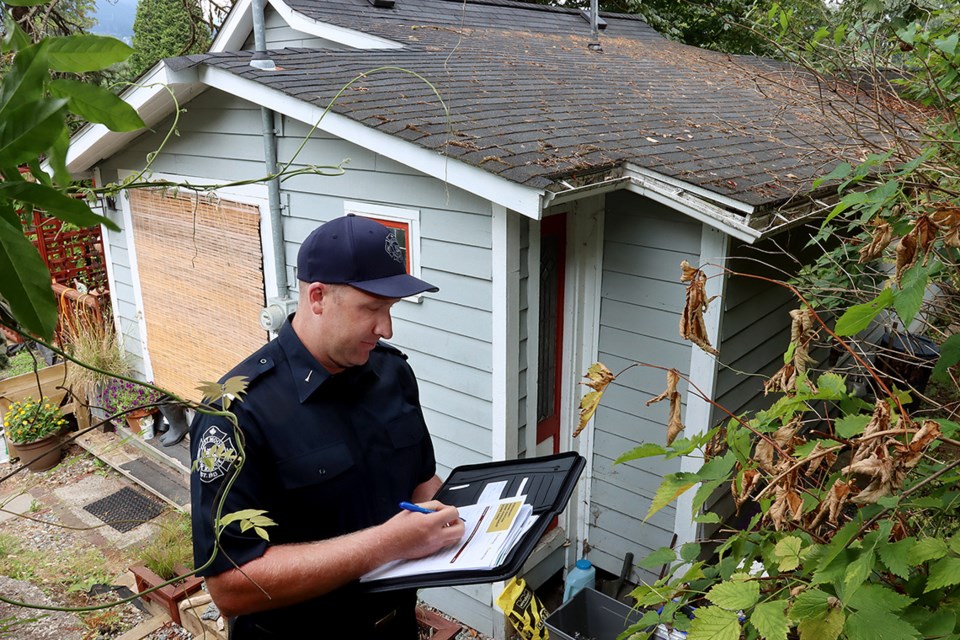Since it was acquired in 2016, Port Moody Fire Rescue’s wildlands squad truck has probably spent more service time outside the community than in the city where it’s based.
But hotter, drier summer weather brought on by a changing climate could tip that balance the other way.
Jeff Scallion and his fellow firefighters are working to ensure the city is ready.
Already this year, crews have conducted FireSmart assessments on 25 homes in neighbourhoods that border Port Moody’s natural surroundings of heavily-forested mountainsides.
Scallion, who carries out many of those assessments, wishes more residents would take advantage of the free service, even grouping appointments with their neighbours because if a wildfire threatens a neighbourhood, it can quickly spread to even those homes that have taken measures to lessen their risk.
Those measures include removing combustible materials like wood from properties or under decks, keeping rooftops clear of debris such as dried leaves and pine needles, ensuring roofs and siding are in good condition and clearing out dead vegetation.
“The goal is to prevent ember and ashes from igniting structures,” Scallion said.
An assessment takes about an hour, after which the homeowner is left with a checklist of recommendations for things they can do around their property that will help keep their property safe should a wildfire approach.
Some of the measures can also help prevent a wildfire from igniting.
“We live right next to the forest, so the potential is definitely there,” Scallion said.
“As summers get hotter and longer, there’s more fuel for potential wildfires.”
For parts of Port Moody where homes are situated at the foot of mountain slopes or along hillsides, the stakes are especially high because fires move uphill more rapidly.
Keeping a home safer from wildfires starts right with the materials used to construct it.
Roofs made of metal, asphalt, clay and composite rubber tiles are more fire resistant than untreated cedar shakes.
Metal siding, stucco, brick, concrete and fibre cement exterior walls are better than untreated wood or vinyl siding that offer little protection against a wildfire.
Doors should be fire rated and windows should be tempered and double-paned.
Decks can be a particular problem, Scallion said, as they’re often made of wood and homeowners tend to store materials and debris beneath them because it’s convenient and out of sight.
The BC Wildfire Service recommends they be enclosed, and the bases sheathed in fire-resistant material.
Landscaping and property maintenance are the next areas of concern, as half of home fires caused by wildfires are started by sparks and embers that can easily ignite dried leaves or needles and quickly spread out of control.
Plants and shrubs immediately next to a home should be low-density and fire resistant, with moist, supple leaves, and watery, odourless sap. Cedar, spruce, juniper and pine should be avoided, and grass should be trimmed to less than 10 centimetres.
The idea, Scallion said, is to create a kind non-combustible zone of about 1.5 m around the home that can be bolstered with ground cover like crushed gravel or stone for extra protection.
Beyond that, seasonal debris from trees should be cleared, mulches avoided, firewood piles kept clear of any structures and fire pits located at least three metres from any combustible material.
As well, homeowners should have tools like shovels, rakes, axes, a garden hose and sprinklers readily available to help suppress any wildfires that might come near.
Scallion said most of the measures are common senses that should become second nature as they’re implemented.
“It’s baby steps,” he said. “It all doesn’t have to happen all at once.”
To book a free FireSmart assessment, email Port Moody’s fire department.



